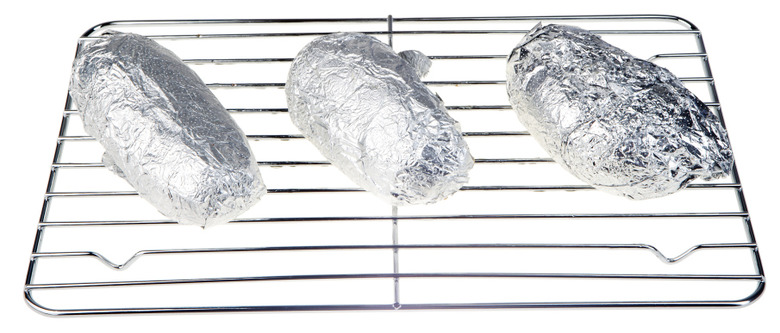Melting Temperature Of Aluminum Foil
The melting temperature of aluminum foil is 660 degrees Celsius (1,220 degrees Fahrenheit) at standard pressure, so it won't melt with temperatures encountered in a standard household oven. The physical form of the aluminum, whether powder, blocks, foil or some other shape, does not affect the melting point as long as the metal is relatively pure; melting point is an intrinsic property of the metal, but shape is not.
Why Aluminum Melts
Why Aluminum Melts
The forces that attract one molecule to another determine melting point; the stronger the attraction, the higher the temperature required to melt the substance. Molecular vibrations produced by heating overcome the intermolecular forces when the temperature passes the melting point. For metallic substances, the atoms don't form molecules so much as large masses of atoms stuck together; this is called metallic bonding. When the vibrations from heat overcome the bonds, the atoms break free from one another and the metal melts.
Cite This Article
MLA
Papiewski, John. "Melting Temperature Of Aluminum Foil" sciencing.com, https://www.sciencing.com/melting-temp-aluminum-foil-9207/. 24 April 2017.
APA
Papiewski, John. (2017, April 24). Melting Temperature Of Aluminum Foil. sciencing.com. Retrieved from https://www.sciencing.com/melting-temp-aluminum-foil-9207/
Chicago
Papiewski, John. Melting Temperature Of Aluminum Foil last modified March 24, 2022. https://www.sciencing.com/melting-temp-aluminum-foil-9207/
